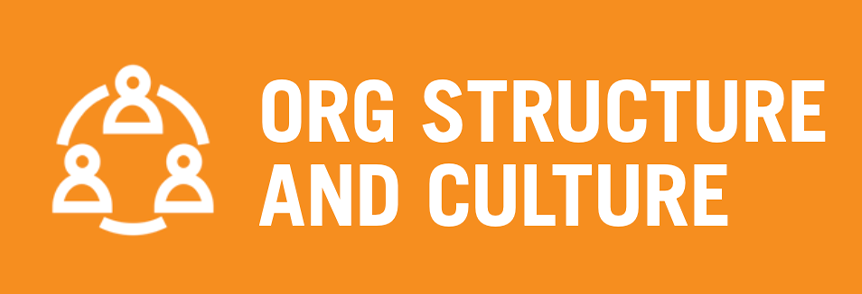





EVERY PERSON
SHOULD BE THERE FOR THEIR FAMILIES IN THE MOMENTS THAT MATTER MOST
EVERY PERSON
SHOULD BE THERE FOR THEIR FAMILIES IN THE MOMENTS THAT MATTER MOST
In 2016, Paid Leave for the U.S. (PL+US) was founded as a time-bound campaign to win paid family and medical leave for every working person in the U.S.
In five years, PL+US won paid leave for 8.5 million working people at some of the country’s largest employers and helped advance federal policy through the House of Representatives, a historic achievement.
With tremendous pride and optimism for the future, PL+US closed our doors in the summer of 2022. This site shares the story of what PL+US and tens of thousands of grassroots paid leave advocates achieved during this campaign.
PL+US worked to enact change in these four ways:

CORPORATE ENGAGEMENT
CORPORATE ENGAGEMENT
One path to winning paid leave for more working people in the U.S. was through employer policy change. PL+US worked from inside and outside to push large companies to introduce or expand paid leave policies.
With existing advocates focused largely on public sector transformation across the federal, state, and local level, the private sector was a largely untapped source of power for paid leave. PL+US saw an opportunity to push companies to respond to growing public demand for paid leave and provided an opportunity for companies to showcase their leadership in building equitable and supportive workplaces.
Read how PL+US approached its work with an early focus on the corporate sector for four key strategic reasons »
- A series of companies changing their paid leave policies could provide a drumbeat to build momentum.
- Corporate policy change would translate to real-life impact for millions of people.
- Corporate policy change fostered a critical narrative of equity that would be foundational in the public policy debate.
- Companies with new or improved policies could potentially become advocates for a federal policy solution, helping to neutralize the power of business opposition.
Through PL+US corporate engagement work and the change it prompted, more than 8 million people gained new or expanded access to paid leave. This also fostered a national narrative around the business and economic case for paid leave, which would be critical in the public policy debate to come.

ADVOCACY AND STORYTELLING
ADVOCACY AND STORYTELLING
PL+US used advocacy and storytelling to shift public understanding about paid leave. In particular, lifting up real people with real stories about the value of paid leave was central to PL+US’ work and success.
As an organization, PL+US was focused on doing the following to advance the fight for paid leave using advocacy and storytelling:
Read more »
- Early on in its campaign, PL+US focused attention on bad corporate actors to help generate earned media coverage that helped define a good vs. bad paid leave policy, educated reporters on the necessary components of inclusive paid leave, and created a drumbeat of wins that established a sense of momentum behind the push for a federal paid leave policy.
- PL+US actively sought to activate new or unexpected voices on paid leave throughout the campaign to deepen the national conversation and drive a broader understanding of the issue. By mobilizing Dads, bipartisan groups of moms, LGBTQ+ families, etc. in its storytelling and advocacy efforts, PL+US was able to highlight the wide range of Americans who would be positively impacted by paid leave and broaden the discussion beyond a more traditional, gendered discussion of the issue that has primarily focused on maternity leave.
- PL+US also worked to center the voices and stories of advocates paired with relevant data in its storytelling efforts to build humanity and support for paid leave. Powerful personal stories not only led to incredibly impactful earned & paid media but also provided opportunities to build localized support for a federal paid leave policy with key legislators.
- Companies with new or improved policies could potentially become advocates for a federal policy solution, helping to neutralize the power of business opposition.
The stories that the grassroots and grasstops advocacy – working people, business leaders, and celebrities – brought to the campaign were critical to creating the conditions (and movement) necessary for a legislative victory on paid leave.

POLITICS AND POLICY
POLITICS AND POLICY
Winning paid leave would require deep investment in political organizing, building new legislative champions, and embracing a policy that worked for all.
As a single-issue organization outside of the traditional paid leave coalition, PL+US differentiated itself by leaning into political advocacy, paid media, and a non-traditional legislative approach. PL+US had a clear view: to effectively advance federal policy, it needed to build a powerful constituency.
Read what PL+US did in its effort to build that political constituency and win a federal paid leave policy »
- PL+US worked outside the traditional coalition to open the Overton Window on paid leave policy. When existing polling indicated that broad public support for paid leave that went beyond the 12 weeks being discussed in most policies, PL+US partnered with the Georgetown Law School Center on Poverty and Inequality to release a report on the idea and worked with Rep. Cedric Richmond to open a conversation about a more expansive paid leave policy. This work repositioned 12 weeks as the minimum floor for an acceptable paid leave policy rather than the maximum possible.
- PL+US was willing to be political. Through the creation of its c4, PL+US Action, and political action committee, Paid Family Leave PAC, PL+US was one of the few organizations in the paid leave movement capable of piloting the political and electoral work (e.g., making endorsements) that proved key for candidate and voter engagement on paid leave and hiring professional lobbyists who were essential partners in information gathering and Capitol Hill influence efforts.
- PL+US strove to forge common ground on some bipartisan elements of paid leave. PL+US’ single-issue focus made it possible to collaborate across ideological divides (e.g., with the Bipartisan Policy Center) in ways that helped build the credibility necessary to build private sector support for paid leave and helped limit staunch, vocal opposition to paid leave from Republicans during the debate over President Biden’s push for the policy in the Build Back Better legislation.
Working in close coordination with its partners in the paid leave coalition, in November 2021, PL+US’ political and policy work resulted in a federal paid leave proposal passing the U.S. House in the Build Back Better legislative package (a historic first), and the U.S. coming closer to final passage of a federal paid leave program than it had in the nearly 30 years since the passage of the Family & Medical Leave Act in 1993.
As of this writing in April 2022, the passage of national paid leave policy, while not moving quickly enough to meet the country’s immediate needs, looks like a political inevitability. Nationally, support across party lines remains high, the issue has greater salience in the public dialogue than ever before, state policies continue to expand and provide valuable proof points for a federal policy, and the private sector is continuing to lead in expanding workplace policies in the absence of federal policy.

ORGANIZATIONAL STRUCTURE AND CULTURE
ORGANIZATIONAL STRUCTURE AND CULTURE
To win paid leave with principles and authenticity, PL+US needed to model best practices and leadership on work-life balance, self-care, and caregiving for its own staff.
This allowed PL+US to build credibility with partners and businesses in the private sector and authentically speak to policymakers on the benefits of paid leave. PL+US:
Read more »
- Provided flexible hours, unlimited PTO, and paid leave for all kinds of caregiving. The Leadership team consciously led by prioritizing work-life balance and taking their own leave, ensuring cultural modeling.
- Always recognized our team members as the campaign’s greatest asset and operated with the belief that high- potential mission-driven people will get the work done, regardless of their work schedule or physical location.
- Invested in racial justice work through Justice, Equity, Diversity and Inclusion (JEDI) groups, internal culture, and hiring policies.
- Supported staff through the sunset by providing 3 months’ severance, health insurance stipend, and a Professional Development fund to help team members build skills and their network in anticipation of a job search.
- Made work fun! by investing in regular “delighters”, team retreats and in person get togethers and recognition of milestones and anniversaries.
If you’d like to learn more about PL+US’s story, work, and lessons learned, please read the report “Redefining Possibilities: The Fight for Quality Paid Family and Medical Leave for Everyone.”
The report features an in-depth analysis of PL+US’s work on corporate engagement, advocacy and storytelling, and politics and policy, as well as additional insight into its organizational structure and culture, deep dives into particularly notable projects and efforts, and a vision for the road ahead for the fight for paid leave.
You can download and view a full copy of the report here.









